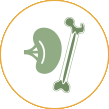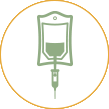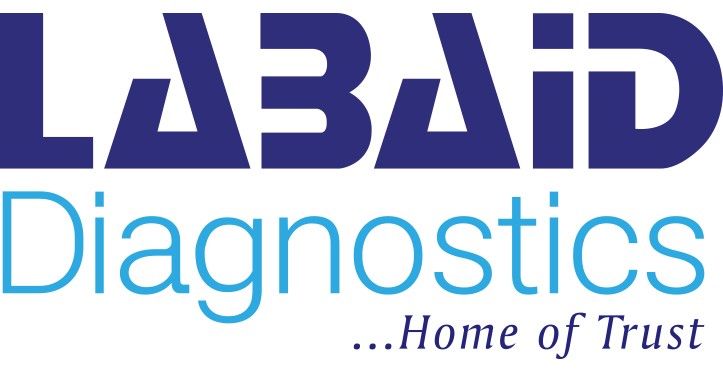Importance of CBC Test
Overview
Complete blood count (CBC) is the most commonly ordered blood test and is used to

Evaluate overall health

Screen for a variety of disorders e.g. anemia, infection etc.

Arrhythmia Disease

Monitor an existing condition e.g. blood disorders.

Monitor treatment such as chemotherapy or radiation therapy
- Evaluate overall health.
- Screen for a variety of disorders e.g. anemia, infection, inflammation, bleeding disorders, blood cancer.
- Check the bone marrow and spleen functioning.
- Monitor an existing condition e.g. blood disorders.
- Monitor treatment that is known to affect blood cells, such as chemotherapy or radiation therapy.
What does it measure?
Complete blood count (CBC) test measures several components of the blood, including:
- White Blood Cells count: The total number of white blood cells in a sample of blood.
- White Blood Cell Differential:There are five different types of white blood cells, also called leukocytes. They are neutrophils, lymphocytes, monocytes, eosinophils, and basophils. This test measures how many of each type the blood has. The numbers of each type may temporarily shift higher or lower in cases such as
- An infection can stimulate the body to produce a higher number of neutrophils to fight off bacterial infection.
- In the case of allergies, there may be an increased number of eosinophils.
- An increased number of lymphocytes may be produced with a viral infection.
- Red blood cell (RBC) count:The actual number of red blood cells, also called erythrocytes, in a sample of blood. Red blood cells are produced in the bone marrow and released into the bloodstream as they mature. The bone marrow continually produces new RBCs to replace those that age and disintegrate or are lost through bleeding.
- Hemoglobin:The total amount of the oxygen-carrying protein in the blood.
- Hematocrit:The percentage of a person's total blood volume that consists of red blood cells.
- Red blood cell indices:Calculations that provide information on the physical characteristics of the RBCs:
- Mean corpuscular volume (MCV): Measurement of the average size of a single red blood cell.
- Mean corpuscular hemoglobin (MCH): A calculation of the average amount of hemoglobin inside a single red blood cell.
- Mean corpuscular hemoglobin (MCH): A calculation of the average amount of hemoglobin inside a single red blood cell.
- Mean corpuscular hemoglobin concentration (MCHC): A calculation of the average concentration of hemoglobin inside a single red blood cell.
- Red cell distribution width (RDW):A calculation of the variation in the size of RBCs.
- Reticulocyte count:A measurement of the absolute count or percentage of young red blood cells in the blood.
- Platelet count: The number of platelets, also called thrombocytes, in a person's sample of blood. Platelets are special cell fragments that play an important role in normal blood clotting.
- Mean Platelet Volume (MPV): Mean platelet volume measures the average amount (volume) of platelets. If the platelet count is normal, the mean platelet volume can still be too high or too low.
How is it performed?
A healthcare professional will draw a blood sample from a vein in the arm or a finger-prick or heel-prick (newborns).
Are there any Side effects of CBC?
CBC test does not usually cause any side effects. Side effects that may happen include:

Discomfort

Bleeding

Bruising

Swelling

Infection
- Discomfort
- Bleeding
- Bruising
- Swelling
- Infection
What the results may indicate?
A CBC is not a definitive diagnostic test. Blood cell counts that are too high or too low could signal a wide variety of conditions. Specialized tests are needed to diagnose a specific condition.
- Anemia - not having enough healthy Red Blood Cells, Hemoglobin and Hematocrit. Anemia causes fatigue, weakness and has many causes, including low levels of certain vitamins or iron, blood loss, or an underlying condition.
- strong>Leukopenia - a low number of White Blood Cells. It is caused by a medical condition, such as an autoimmune disorder that destroys white blood cells, bone marrow problems or cancer. Certain medications also can cause white blood cell counts to drop.
- Leukocytosis – an increased number of White Blood Cells. It may be due to an infection or inflammation or due to a reaction to medication.
- Thrombocytopenia –a low number of platelets. Often a sign of an underlying medical condition or a side effect from medication. Thrombocytosis – an increased number of platelets. Often a sign of an underlying medical condition or a side effect from medication.
What does abnormal CBC result indicate?
Abnormal RBC count
A low RBC count may be due to:
- Anemia due to prolonged bleeding or blood loss (hemorrhage), a diet lacking iron or certain vitamins, certain types of chemotherapy, blood disorders or chronic disease Lymphomas
- Cancers of the blood
- Bone marrow disorders
- Nutritional deficiency
- Chronic Kidney disease
- Chronic inflammatory disease
A high RBC count may be due to:
- Dehydration, such as from severe diarrhea
- tumours
- Lung diseases
- Smoking
- Polycythemia vera
Abnormal Hemoglobin and Hematocrit
It usually mirrors RBC results and provides added information
Abnormal MCV
Low MCV may indicate:
RBCs are smaller than normal. It can be caused by iron deficiency anemia or thalassemias.
High MCV may indicate:
RBCs are larger than normal. It can occur in cases such as anemia caused by vitamin B12 or folate deficiency, liver disease, hypothyroidism.
Abnormal MCH
It usually mirrors MCV results.
Abnormal MCHC
Low MCHC may indicate:
Conditions such as iron deficiency anemia and thalassemia.
High MCHC may indicate:
Conditions where the hemoglobin is more concentrated inside the red cells, such as autoimmune hemolytic anemia.
Abnormal RDW
Low MCHC may indicate:
Uniformity in size of Red blood cells.
High RDW may indicate:
A mixed population of small and large RBCs. In cases such as iron deficiency anemia or pernicious anemia, there is a high variation in RBC size causing an increase in the RDW.
Abnormal Reticulocyte Count
Low Reticulocyte count may indicate:
A condition affecting the production of red blood cells, such as bone marrow disorder or a nutritional deficiency.
High Reticulocyte count may indicate:
Peripheral cause, such as bleeding or hemolysis.
Abnormal WBC count
A low WBC count may be due to:
- Viral infection
- Severe bacterial infection
- Bone marrow disorders
- Autoimmune conditions
- Lymphoma
- Dietary deficiencies
A high WBC count may be due to:
- Infection
- Leukemia
- Inflammation
- AStress, allergies, asthma
Abnormal Neutrophil Count
A low neutrophil count, known as neutropenia, may be due to:
- Severe infection
- Immunodeficiency
- Autoimmune disorders
- Dietary deficiencies
- Reaction to drugs
- Bone marrow damage
A high neutrophil count, known as neutrophilia, may be due to:
- Acute bacterial infections
- Inflammation
- Stress, Trauma
- Certain leukemias
Abnormal Lymphocyte count
A low lymphocyte count, known as lymphocytopenia, may be due to:
- Autoimmune disorders
- Infections
- Bone marrow damage
- Corticosteroids
A high lymphocyte count, known as lymphocytosis, may be due to:
- Acute viral infections
- Certain bacterial infections
- Chronic inflammatory disorder
- Lymphocytic leukemia, lymphoma
- Acute stress
Abnormal Monocyte count
Repeated low monocyte counts may be due to:
- Bone marrow damage or failure
- Hairy cell leukemia
- Aplastic anemia
A high monocyte count may be due to:
- Chronic infections
- Infection within the heart
- Collagen vascular diseases
- Monocytic or myelomonocytic leukemia
Abnormal Eosinophil count
Occasional low numbers are usually not medically significant.
A high eosinophil count may be due to:
- Asthma, allergies such as hay fever
- Drug reactions
- Parasitic infections
- Inflammatory disorders
- Some cancers, leukemias or lymphomas
Abnormal Basophil count
Occasional low numbers are usually not medically significant.
A high basophil count may be due to:
- Rare allergic reactions
- Inflammation
- Some leukemias
- Uremia
Abnormal Platelet count
A low platelet count may be due to:
- Cancer, such as leukemia or lymphoma
- Autoimmune diseases
- Bacterial infection
- Viral infection like dengue
- Chemotherapy or radiation therapy
- Certain drugs, such as nonsteroidal anti-inflammatory drugs (NSAIDs)
A high platelet count may be due to:
- Bone marrow disorders
- Essential thrombocythemia
- Anemia
- Infection
- Surgical removal of the spleen
- Polycythemia vera
- Some types of leukemia
Abnormal MPV
Low MPV may indicate: A condition affecting the production of platelets by the bone marrow.
High MPV may indicate:
A high number of larger and younger platelets in the blood. It may be due to the bone marrow producing and releasing platelets rapidly and prematurely into circulation.
